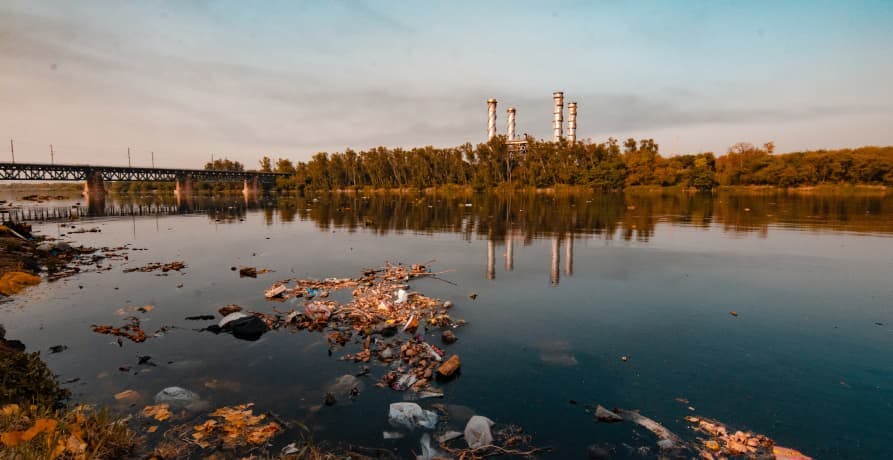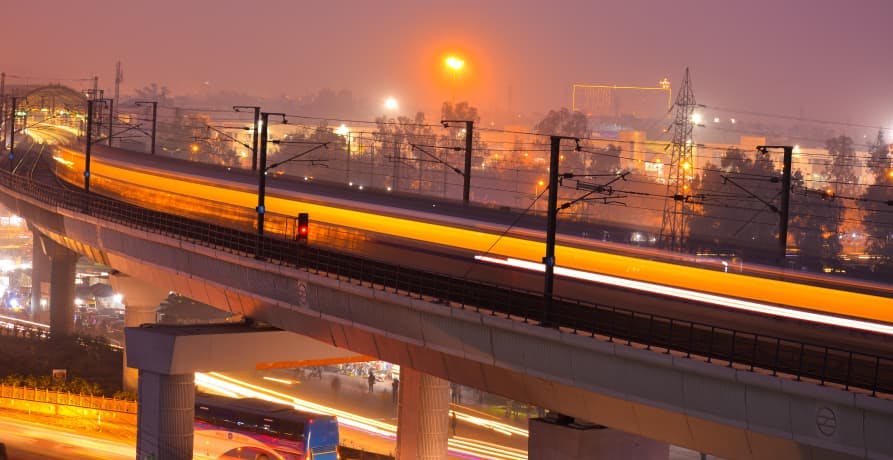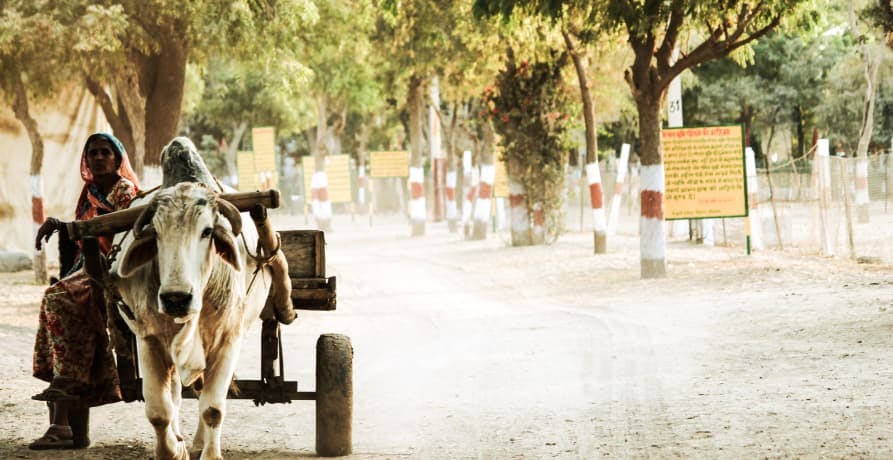ESG / CSR
Industries
Why is Climate Change a Huge Challenge for India



Home to over 1.4 billion people, India recently overtook China as the country with the largest population in the world. Unsurprisingly, India also has one of the fastest growing economies, but since it’s still considered to be industralizing, India’s exceptional development risks propelling global greenhouse gas emissions even higher.
India is in a difficult position - it needs to nurture economic development that supports its 1.4 billion large population and their growing economic aspirations, while also meeting global and national climate change targets.
👉 In this article we’ll explore how climate change is impacting India, how India is contributing to global warming, and what is being done to both mitigate emissions and adapt to the impacts.
Why is climate change a challenge for India?
Understandably therefore, global warming is a big concern for India. It’s impacting India’s natural environment, population, and economy. Increasingly frequent and intense floods, heat waves, monsoons, and depleting groundwater reserves are just a few of the climate induced challenges that India now faces. Let’s take a look at the risks posed by these climate events:
Heat waves
India is one of the most vulnerable countries in the world when it comes to heat waves. In fact. Just this spring (2023) temperatures in India soared to as high as 45 degrees celsius, resulting in the death’s of at least 96 people and prompting the Indian Meteorological Department to issue alerts for some areas.
💡 Studies show that heat waves in India are 30 times more likely to occur as a result of climate change.
The reason for the unseasonably high temperatures has been a delay in the start of their monsoon season. Though India is no stranger to heat waves with between 5 and 6 heat wave events occurring every year - and due to the effects of climate change heat waves are getting more and more intense.
India’s population is particularly vulnerable to the harmful effects of heat waves for a number of reasons. Many regions in India are also very humid which compounds the dangerous health effects of hot weather - something that is known as the wet bulb temperature.
Another factor that complicates the situation is the infrastructure in India. It’s not uncommon for power outages to be exacerbated during heat waves, which can impact health care services, transportation, and even water infrastructure.
👉 During heat waves in India, tens of thousands of people struggle to access water due to severe water shortages.
Monsoons and intense rainfall
One of the impacts of climate change is that a warmer atmosphere is able to hold more moisture. This means that we can expect heavier rainfall, and changes to the typical pattern of India’s monsoon season.
Although an increase of 5 to 10% sounds relatively small, the impacts can be significant. For a start, with India’s growing population, agricultural output is crucial for ensuring food stability in the country. However, increased rainfall can affect agricultural production which risks creating issues with food supply.
Another concern when it comes to monsoons and increasingly heavy rainfall is the threat of flooding. Flooding is currently the most common natural disaster that occurs within India’s territory. The most recent incidence was in 2022 when heavy rain caused floods in the Balrampur region, impacting over 1,300 villages.
Drought
While flooding and intense rain are becoming more erratic and intense across India, so too are the dry spells in between. The dry periods between monsoons have gotten longer and India’s soil is less able to absorb and hold water when it finally does rain, making it increasingly difficult for India’s population to access a reliable source of water.
A reduced water supply is bad news for India’s population. Not only does it create drinking water shortages, it also impacts livestock, and the ability to successfully produce essential crops.
One example that perfectly illustrates India’s resource mismanagement is the recent boom in sugar cane production (sugar cane is one of the most water-intensive crops grown). Sugar cane mills have appeared across India (often owned by politicians and their network), pushing India to become the world’s biggest sugarcane producer. In order to facilitate the production of this crop, the government has subsidised electricity and fertiliser, and encouraged farmers to use as much groundwater as needed to successfully grow the crop.
👉 It’s estimated that three quarters of irrigated sugar cane production is located in areas that are classified as suffering from extremely high water stress.
This perfectly illustrates India’s growing dilemma - ie. how can it successfully balance economic development with environmental considerations.
Economic and social impact of climate change in India
Extreme climate events such as droughts, flooding and heat waves create a variety of negative impacts. Not only do they present a threat to human lives, they also present an economic challenge. India’s own Reserve Bank has projected that 4.5% of India’s GDP could be at risk by 2030 due to the impacts of climate change.
The economic impacts of climate change are far reaching for a country like India. Productivity declines as populations grapple with extreme heat and humidity, and extreme weather events also have the potential to impact production output, threaten food and water supplies, disrupt services and damage infrastructure. Whole communities of people may find themselves displaced or struggling to support themselves.
👉 It’s estimated that if India doesn’t take further steps to address the adverse effects of climate change, the damage to the economy will reach 35 trillion US dollars within the next 50 years.

India’s most vulnerable communities
As is most often the case, it’s the most vulnerable communities who suffer the most from the impacts of climate change.
Vulnerable communities in India often work outdoors, in more labour intensive jobs such as agricultural work, construction etc. They are usually left with no choice but to continue to toil away outside - even in heat waves - in order to make ends meet. They are also less likely to have access to clean drinking water, or cooling solutions such as AC or fans.
How is India contributing to climate change?
Given that India is now home to the world’s largest population, it's unsurprising that it contributes significantly to global carbon emissions. Though considering that India accounts for nearly 18% of the world’s population, yet only contributes 7% of the world’s annual carbon emissions, the argument can be made that India’s carbon emissions per capita is actually pretty low.
However, as India’s population and economy continue to grow and living standards across the country improve, we can expect its greenhouse gas emissions to also increase. This is why India will play such an essential role in whether or not the world reaches its climate change targets.
India’s climate change targets and actions are being closely watched and scrutinised. How India handles its net zero transition may well influence other large developing economies. If it is able to successfully adopt low carbon development initiatives while also increasing the living standards and opportunities for its people, it’s likely that other countries will follow suit.
What is India’s stance on climate change mitigation and adaptation?
In 2021 at COP26 India significantly increased its climate mitigation commitments by pledging to reach net-zero emissions by 2070. And in 2022 it updated its Nationally Determined Contribution (NDC - ie. a climate action plan to cut emissions and adapt to climate impacts) to incorporate a set of enhanced targets. These targets are similar in scope to other industrialised nations.
Examples of some of the headline targets that India is focused on achieving include:
- Reducing the emissions intensity of its GDP by 45% by 2030;
- 50% of energy requirements from renewable energy by 2030;
- A new framework that facilitates a transition to cleaner energy for the period of 2021 to 2030. The framework will also boost green jobs, promote innovation, and boost the manufacturing of low emissions products;
- Increased adaptation targets and enhanced investment in green development programs - particularly in sectors that are the most vulnerable to climate change.
- Domestic policies to protect their glaciers, create a greener railway system, the introduction of single use plastic, and the production of clean cooking fuel.
Soon after the release of India’s NDC, it released a ‘Long-term Low Emissions Growth Strategy’ that recommits to these targets and introduces a number of other initiatives that aim to reduce India’s carbon footprint.
These ambitious targets have cemented India’s reputation as being a leader in the climate change fight and an inspiration for other emerging markets and developing economies. India’s own Prime Minister - Narendra Modi - is considered to have some environmental credentials himself.
Modi’s support for renewable energy sources such as solar power extends back to his time working as a government official in 2010. He was also the one to push for strong climate change targets at COP26 in 2021.
Modi’s government has adopted a market based approach - as opposed to a regulatory approach - to edge out coal and usher in a new era of renewable energy and investment. And so far the strategy has been working. The Indian Government is providing the necessary support to allow the private sector to drive green innovation.
👉 The IEA predicts that by 2040, 30% of India’s energy will com from solar power.

Will India meet its climate change targets?
The problem that India faces is that it’s a large and rapidly expanding economy. As GDP rises, its population will increasingly expect its fair share of the benefits - ie. increased standards of living. India has to sustain this growth somehow, and this requires energy.
In an ideal world this energy would be provided by renewable sources, but unfortunately that's not the world we live in. Renewable energy takes infrastructure, investment and technology. Coal and fossil fuels on the other hand are more readily available to India, and unfortunately it’s likely that for the foreseeable future these harmful energy sources will continue to provide a large share of India’s energy mix.
However, India is not tied to the use of coal - it’s more a case of coal being what they currently have access to. Officials in India are, in fact, working to develop renewable energy sources (India has a target of meeting 50% of energy from non-fossil fuel sources by 2030), while relying on energy sources like coal in the meantime.
India needs help
It’s not enough for India alone to take action. The actions of the Global North will play a role too.
According to the International Energy Agency (IEA) India will need support from the Global North to the tune of 1.4 trillion US dollars worth of investment. This is the only way that India can realistically align its energy sector with global climate change targets.
It’s also likely that global funding mechanisms and financial lenders such as the World Bank and the International Monetary Fund (IMF) will also have to adapt mechanisms to help facilitate this investment.
India is a developing country in the midst of rapid expansion. It’s currently at a fork in the road and the decision as to which direction to take has the potential to impact not only its own future, but also the climate future of the world. If India chooses unabashed rapid expansion based on the quick and easy, and tried and tested coal based energy system, it's hard to see how India can meet its climate targets. However, if it chooses to base its growing energy grid on renewable energy sources and low carbon options, it will provide an inspirational blueprint for other rapidly growing developing countries.
The world is waiting to see what India does next with bated breath, but the Global North must also deliver on its financial commitments to ensure that India has the financial resources to allow it to make the more environmentally friendly choice.
What about Greenly?
At Greenly we can help you to assess your company’s carbon footprint, and then give you the tools you need to cut down on emissions. Why not request a free demo with one of our experts - no obligation or commitment required.
If reading this article has inspired you to consider your company’s own carbon footprint, Greenly can help. Learn more about Greenly’s carbon management platform here.







